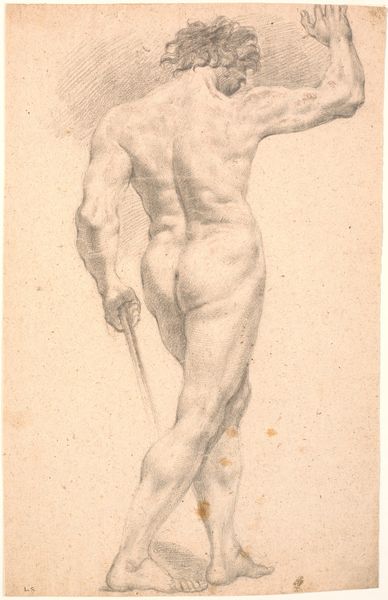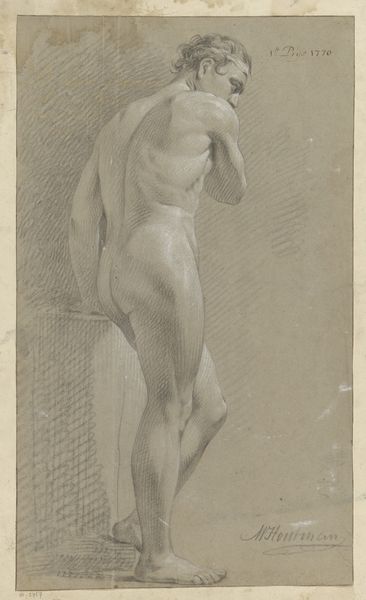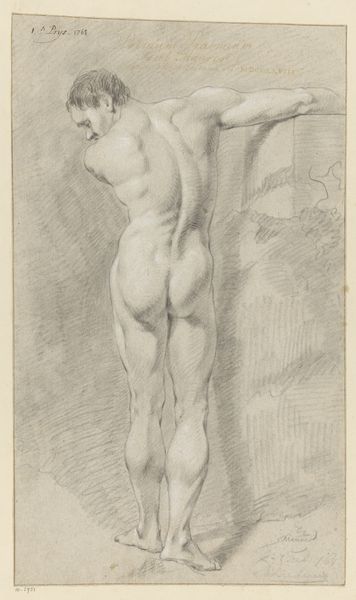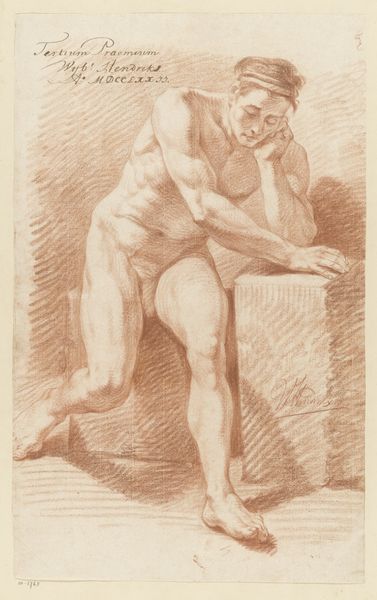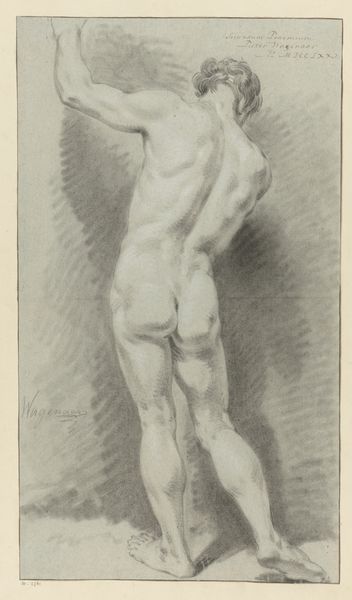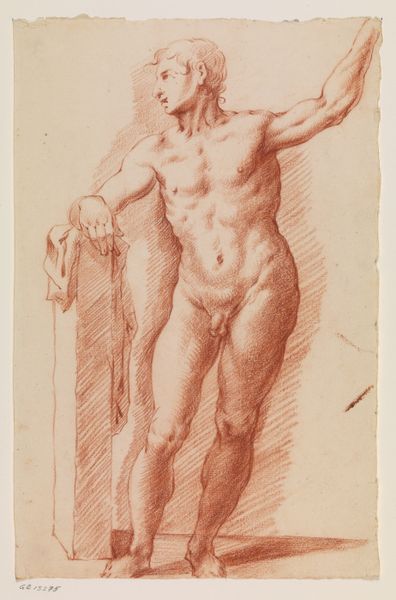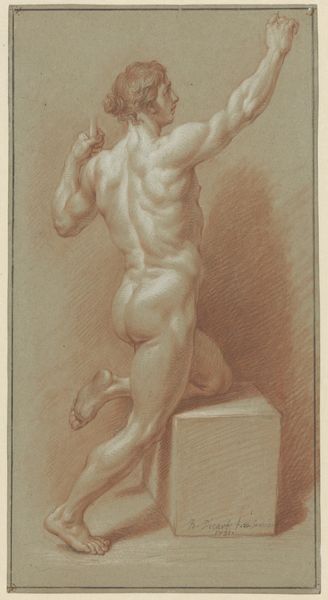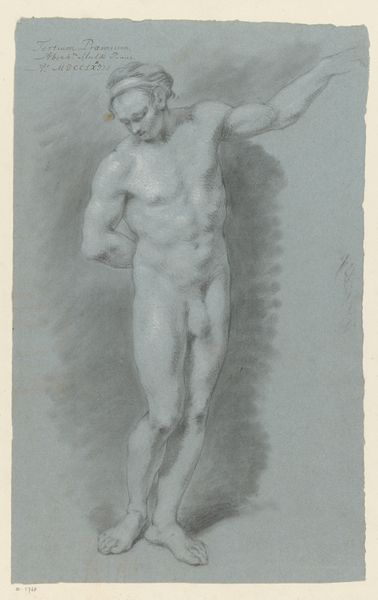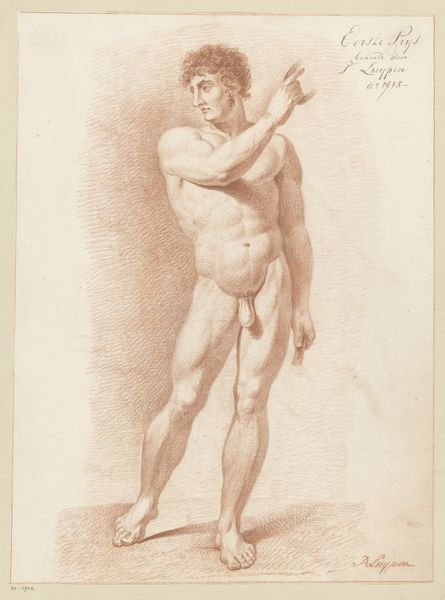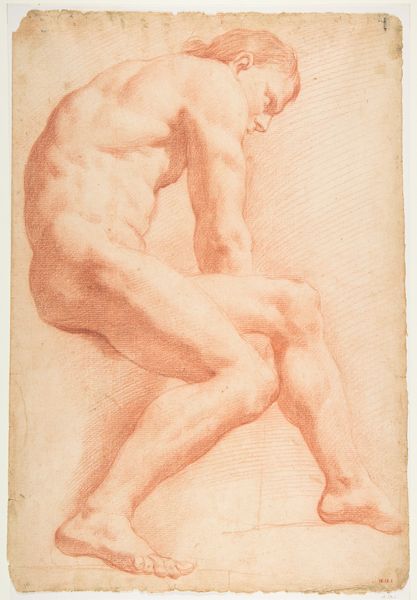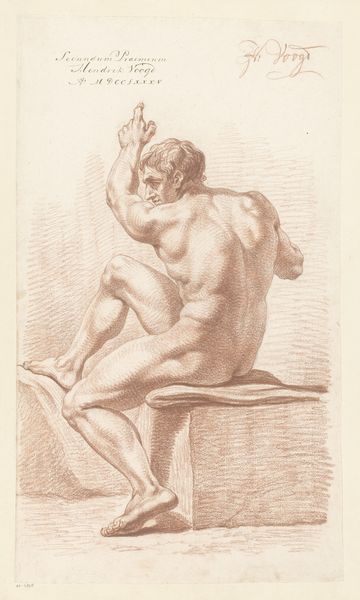
Staand mannelijk naakt, van opzij gezien (1e prijs 1773) Possibly 1773
0:00
0:00
drawing, paper, pencil
#
portrait
#
drawing
#
classical-realism
#
charcoal drawing
#
figuration
#
paper
#
pencil drawing
#
pencil
#
portrait drawing
#
academic-art
#
nude
#
realism
Dimensions: height 573 mm, width 330 mm
Copyright: Rijks Museum: Open Domain
Curator: Here we have "Standing Male Nude, Seen from the Side (1st prize 1773)" by Johannes van Dregt, likely completed in 1773. It’s currently held at the Rijksmuseum. Editor: My initial reaction is a feeling of intense academic study. The pose is classical, almost sculptural, but rendered with a striking focus on anatomical precision using red chalk. Curator: Absolutely. Van Dregt’s drawing exemplifies the academic training of the period. Nude studies were central to artistic education, emphasizing understanding human anatomy through direct observation and meticulous rendering. We must also recall that academic art served powerful cultural functions beyond mere representation, acting as visible markers of status and skill. Editor: And you see it in the very distinct, even laborious application of the chalk. Look at the build-up of layers to define the musculature. The drawing highlights not just skill, but the labour involved in acquiring that skill. It's as much about showing the artistic process as the finished figure. What’s really interesting is thinking about where he sourced this very particular type of chalk; it is integral to how the piece communicates artistic value. Curator: The "1st Prize 1773" inscribed on the drawing immediately points us to its original context: an art academy. Prizes such as these fostered competition, promoting adherence to established stylistic norms and solidifying hierarchies within the art world. It speaks to the institutional forces shaping artistic production at the time. Editor: Precisely. The material choice, coupled with that inscription, becomes part of the piece's inherent message about achieving perfection through learned practices. This approach definitely blurs lines between 'high art' and the labour needed to produce that form. Curator: Indeed, seeing art in a historical context allows us to appreciate these intertwined narratives of institutional validation and artistic merit. Editor: And considering it through a materialist lens gives a heightened awareness of process, skill and making, revealing a dense, and even layered significance to the art object.
Comments
No comments
Be the first to comment and join the conversation on the ultimate creative platform.
